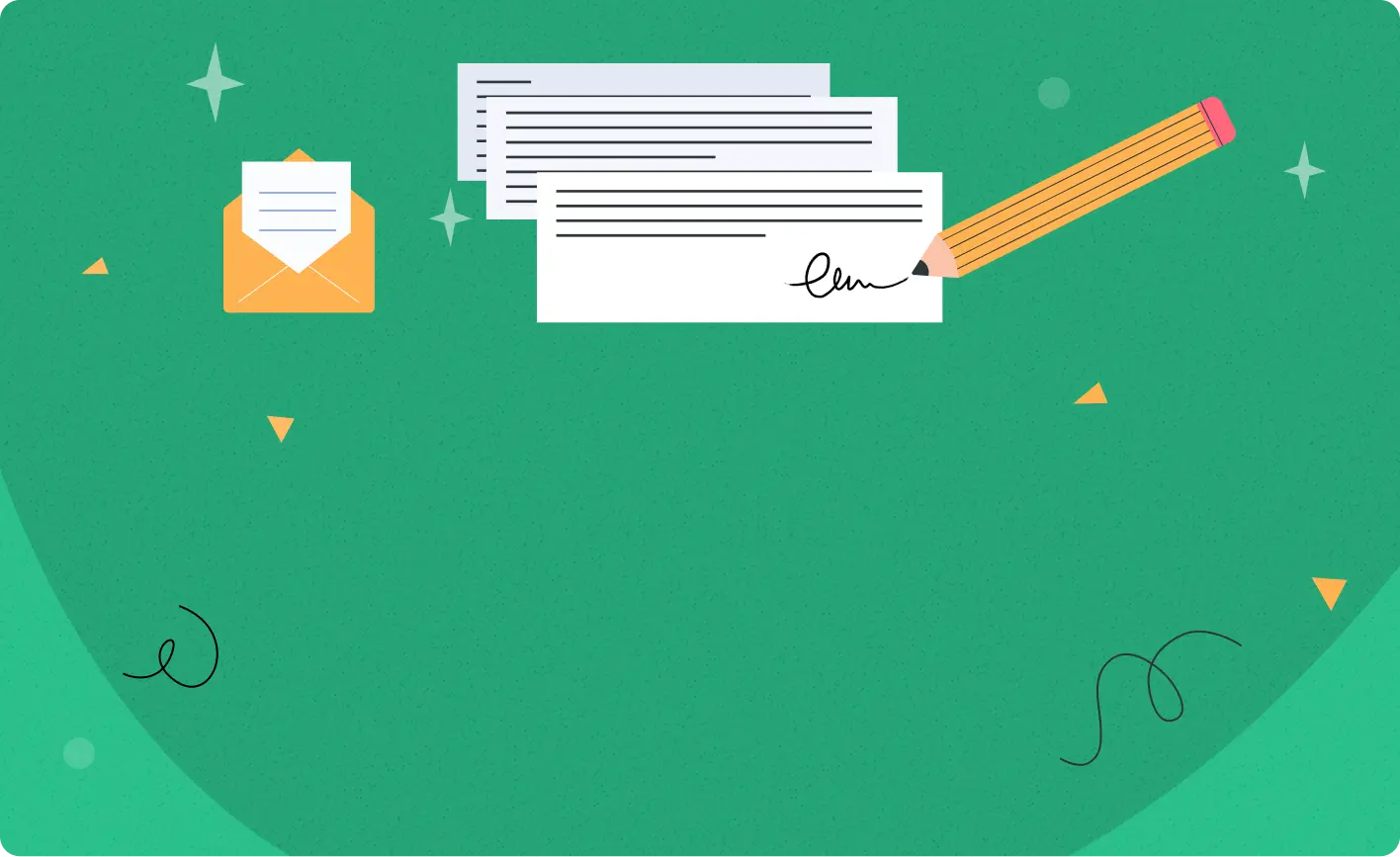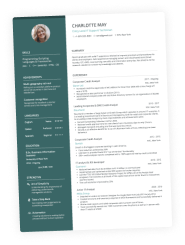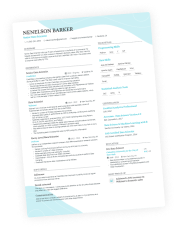Writing a cover letter can feel like guesswork—what do you say, how long should it be, and what really makes it stand out?
The truth is, a strong cover letter doesn’t just summarize your resume. It adds context, personality, and shows why you're a great fit for the role. But that only works if your letter is well-structured and easy to follow.
In this guide, we’ll break down the perfect cover letter outline from how to start strong to how to wrap up with impact. You’ll learn what each section should contain, how to keep it concise, and how to tailor it to different roles.
Here’s what you need to know before you start writing.
Key takeaways
- Formatting tips: Use a professional layout—header, greeting, body, closing, and signature.
- Cover letter structure: Build a strong intro, focused body, and a confident close.
- Rule of three: Present your qualifications, a key achievement, and company alignment.
- Opening line strategy: Start with a personalized hook instead of a tired template.
- Tailoring techniques: Align your letter with the role and stand out from generic applications.
Struggling to get started? Try our Cover Letter Generator and create a tailored letter in minutes—no templates, just results.
Drop your resume here or choose a file.
PDF & DOCX only. Max 2MB file size.
What is a cover letter outline? Structure and formatting tips
A cover letter outline is a roadmap for your content, it ensures you include what matters most, in a logical and compelling order.
Here’s the outline to follow:
Basic structure of a cover letter
- Header: Your full name, phone number, email address, and city/state. Add the date below.
- Employer’s contact info (optional but ideal): Hiring manager’s name, title, company name, and company address.
- Salutation: Aim for a personalized greeting, like “Dear Ms. Patel.” Avoid “To Whom It May Concern.”
- Introduction paragraph: State the role you’re applying for and introduce a key reason you’re excited about it.
- Body paragraph(s): Highlight your qualifications and key achievements that align with the job. Use the “rule of three” structure to organize your thoughts.
- Closing paragraph: Reiterate interest, express enthusiasm, and include a call to action (e.g., “I’d love to speak more about how I can contribute to your team.”).
- Signature: Use a formal closing like “Sincerely,” followed by your name.
With the content outlined, here’s how to format it for readability and impact.
Formatting guidelines
- Font: Use a professional, readable font, like Rubik, Arial, Lato, or Times New Roman in 10–12 pt size.
- Margins: One inch on all sides—or follow the size from your resume.
- Spacing: Single-spaced paragraphs with a single line between each.
- File format: Submit your cover letter as a PDF unless instructed otherwise.
- Length: One page maximum—typically three to five paragraphs. (Certain roles, such as academic or federal positions, may call for longer letters.)
PRO TIP
Match the formatting of your cover letter to your resume for a cohesive, polished application. Use the same font, layout, and color scheme to make both documents feel like a unified, professional set.
Now that you’ve seen the structure and formatting, let’s break down how to write each section effectively.
How to write your cover letter? Section by section
Now that you’re familiar with the layout, here’s how to write each section with clarity and impact. Use this guide to craft a cover letter that reads smoothly and feels personalized.
Step 1. Cover letter header: Contact details and employer info
Start with a clean, professional header that mirrors your resume.
- Your contact details: Include your full name, phone number, professional email address, and city/state.
- Date: Add the date below your contact info.
- Employer’s contact info (optional but ideal): If available, include the hiring manager’s name, title, company name, and company address.
This sets a polished tone from the start and shows attention to detail.
Step 2. Introduction: Grab their attention
Start your cover letter by stating the job you’re applying for and where you found the listing. Then, make it personal and mention a referral, a shared value, or why the company stands out to you. If you have a connection to the company—whether it’s through someone you know, past collaboration, or admiration for their work—this is the moment to bring it up.
Example:
I’m applying for the Marketing Associate role at Greenline. Sara Liu, who I worked with at Finch Creative, spoke highly of your team’s collaboration. I’ve followed your campaigns since—especially your Earth Week initiative—and appreciate your thoughtful, data-driven approach to community storytelling.
Avoid generic openings like “I am writing to express interest…” and instead lead with genuine interest and a connection that reflects your familiarity with the company.
Step 3. Body: Show your fit using the rule of three
Use up to three short paragraphs (or a single body section with three main ideas) to make your case.
Your qualifications
Connect your skills and background to the job. Focus on what makes you a strong candidate for this specific position, not everything you’ve ever done.
Key achievements
Show, don’t just tell. You can do this by sharing a specific achievement with a measurable result, such as a campaign that improved conversion rates.
Alternatively, you can tell a brief, engaging story that illustrates how you solved a problem or made a meaningful impact. The storytelling approach works well if your resume already focuses on numbers and you want to add a more personal, narrative element.
Example:
At Crescent & Co., I led a rebranding campaign that boosted email engagement by 42%. We repositioned the brand around customer trust, redesigned the visuals and messaging, and launched a new email series that helped re-engage dormant subscribers. This cross-functional project also improved our team’s collaboration and delivery speed.
Cultural fit and enthusiasm
This is your chance to show that you “get” the company and you’ve done your research. Go beyond flattery, demonstrate genuine alignment with its values, mission, or approach.
To do this well:
- Research recent projects or campaigns: Check press releases, blog posts, or social media.
- Review the company’s mission statement and core values: Explore their website or LinkedIn page.
- Scan employee testimonials or company reviews: Use platforms like Glassdoor or Comparably.
- Look at the leadership team’s content: Find LinkedIn posts, interviews, or opinion pieces for cultural insights.
Step 4. Ending: Express interest and invite next steps
Reiterate your interest and value, then politely ask for the next steps.
Example:
I’d welcome the chance to contribute to your growing team and would love to speak further about how I can support your goals. Thank you for your time and consideration.
Passive closings like “I hope to hear from you” can weaken your message. End your letter with a more confident, respectful tone.
With your letter written, let’s sharpen it even further, with smart tips and common pitfalls to watch out for.
Step 5. Closing: Sign off and list your enclosures
End your letter with a formal, respectful closing that matches your tone and reinforces your professionalism. A thoughtful sign-off wraps up your message with confidence, while an enclosure line signals that additional documents are attached for review.
- Sign off: Use “Sincerely,” “Best regards,” or “Thank you,” followed by your full name.
- Enclosure line (optional but recommended): If you're submitting additional materials (like a resume or portfolio), include an “Enclosure:” line beneath your name.
Example:
Sincerely,
Jordan Ellis
Enclosure: Resume
This small detail shows you’ve thought about the full application package and makes it easier for hiring managers to see what’s included.
Pro tips and common mistakes to avoid
Once you have a solid structure, making a few smart adjustments and steering clear of common traps can take your cover letter to the next level.
Pro tips for a standout cover letter
- Tailor each letter: Address the specific company and role. Generic cover letters get ignored.
- Reflect the job description:Use keywords from the listing to align with the role. While not all cover letters are scanned by ATS, it helps to match language the employer is looking for.
- Match tone to the company: A startup may prefer a conversational style, whereas a law firm might expect a formal tone.
- Use specific examples: Replace vague claims (“I’m a great communicator”) with proof (“Led weekly client briefings for a team of 12”).
- Keep it skimmable: Stick to short paragraphs, limit large blocks of text, and focus on making your message easy to follow.
Even with the right tactics, it’s easy to fall into a few common traps.
Common mistakes to avoid
- Using a generic salutation: “To Whom It May Concern” feels impersonal and outdated. Try to find the hiring manager’s name, or default to “Dear [Department] Team.”
- Repeating your resume: Instead of listing every job, explain how one or two key experiences connect directly to this role.
- Overexplaining why you’re job hunting: Keep the focus on the value you bring. If you need to mention a gap or career shift, do it briefly and frame it in a way that supports your readiness for the role.
- Sounding overly formal or robotic: Skip clichés like “I am writing to express my interest in...” and aim to be direct and natural.
- Submitting without proofreading: Typos or inconsistent formatting can make you seem careless, even if your qualifications are strong.
Conclusion
A strong cover letter doesn’t need to be long. It just needs to be clear, personal, and tailored to the job. When you follow a proven structure and stay focused on what matters most to the employer, you make it easier for them to see why you’re the right fit.
Don’t overthink it. Follow the outline, sound like yourself, and support your strengths with real examples that show what you’ve achieved. And remember: even a short letter can leave a strong impression when it’s well-written.
Need help getting started? Try our Cover Letter Builder to build a custom letter in minutes—no guesswork, no stress.




